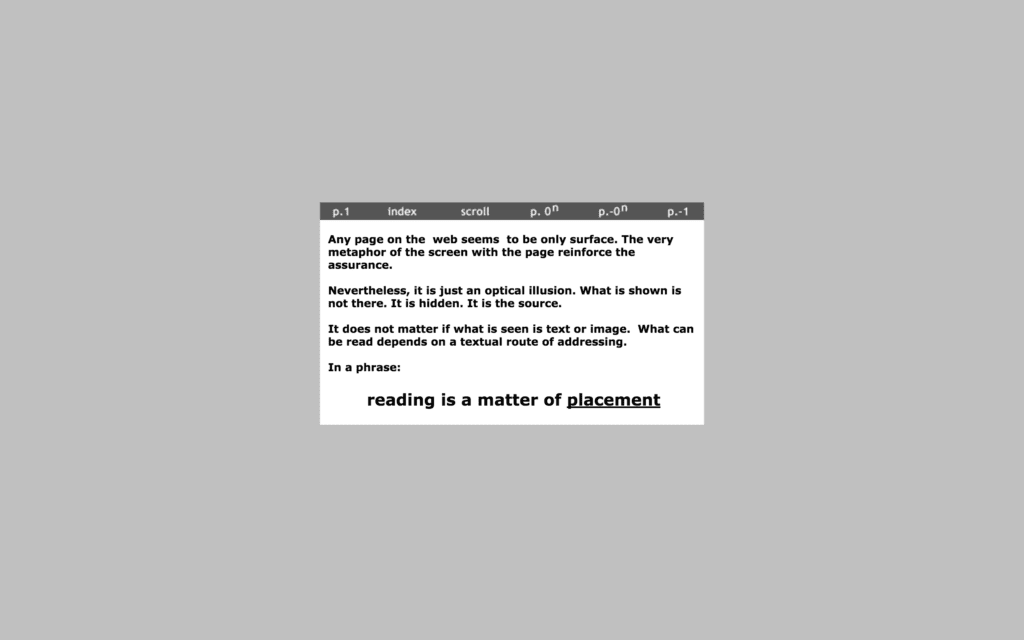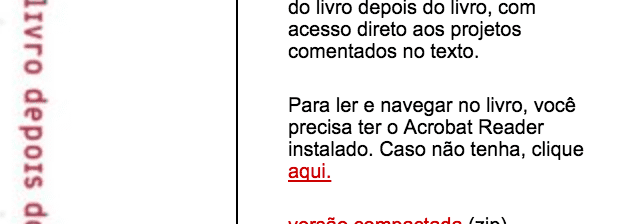By Ben Doyle
For our October 2016 NULab works-in-progress event, Élika Ortega presented a thought-provoking introduction to her current project, “Distributed Media Architectures in Print-Digital Literature.”
To summarize for those who were not able to attend, Ortega explores what she terms as a “media fusion” poetics at work among Latin American writers who, as early as the late 1990s, were responding to the emergence of newly available digital modes of literary expression. As Ortega historicizes this modal shift, a trans-formative Latin American multi-media poetics began to formulate, albeit somewhat informally, in response to an uncertain future of print literatures and the rise of new, alternative digital media forms. In the examples she draws on1for some web examples of her primary sources, see http://banditomag.com/anacron/;
http://findelmundo.com.ar/wordtoys/data/libro.html;
http://desvirtual.com/thebook/;
clickable poem@s https://www.amazon.com/clickable-poem-Spanish-Luis-Correa-D%C3%ADaz-ebook/dp/B01JJA5UMY, Ortega demonstrates how each posits a continuance or adaptation rather than loss or erasure of the “old” media into new literary expressive forms. Such works seek to move the reader between print and digital iterations of a work, where poiesis operates through “distributed,” “pluri-directional” rather than discrete media architectures2‘distributed architecture’ is a term she borrows from Johanna Druker’s “Distributed and Conditional Documents”. Such trans-formed movements, she argues, make possible opportunities for unsettling — “deterritorializing” — otherwise seemingly stable concepts of nation-hood, identity, language, and literature, not to mention literary forms.
Her project advances, as I saw it, two really important points:
media are not discrete, but are, whether by human design, accident, or some thing inherent, necessarily blended, overlapping “hybrid” phenomena
such non-discreteness reveals the distributed and emergent conditions of texts and textual experience, and, therefore, the transformative possibility of poiesis
As a way of inviting participants into this experience, Ortega passed around the print editions of the sample works to demonstrate how they blend available media by infusing digital “mechanisms” within printed texts. From the use of QR codes in Luis Correa Diaz’s clickable poem@as to Belen Gache’s El libro del fin del mundo including a CD-ROM, “media metamorphoses” align these works in a poiesis of “betweenness.” I was particularly struck by Ortega’s analysis of not only the presence of multiple surfaces but by what she underscored as the “between” space of surfaces created by distributed media architectures. Each work employed not only a distributed architecture but a disruptive one by way of this betweenness.
This has really stuck with me as I’ve begun to think more carefully about media as not just non-discrete and overlapping (which I often fail to do), but media as also not discreet, or obtrusive and dissensual. Since her talk, I’ve been considering this “between” space of media forms as a site and experience from which to challenge distributions of the given and the sensible by activating a process, a pathway, a movement by the reader that is not just intellectual or conceptual but technological and physical. A question posed by the group was what happens to the pleasure of literature and reading when the reader is moved in another way, uncomfortably between forms. Such discomfort, it seems, is the result of both the introduction of unfamiliar “surfaces,” to borrow a phrase from Ortega, as well as disruptions to reading, as they insert irrational and incongruous logics and, therefore, experience into acts of interpretation or assertions over the meaning and meaningfulness of literary expression. This approach, and the poetics of such works, ask us to think about the conceptual gap between a poem and a QR code; the material and technological gap between the book and the mobile device; the spatial, temporal, cultural gap between the CD-ROM and, say, one’s own journey in search of some long-lost hardware to run the text, not for the sake of bringing each into harmonious relation or to acknowledge their separateness but to pay more attention to the space between and the process of going between.
Like all good audience participants, I went in search of her sources in their digital formats (special thanks to Assistant NULab Director, Sarah Connell, for helping me actually locate sources from the talk!). I encountered a few challenges right out the gate: language was first among these. For example, many of her sources move between language forms (Spanish and English). My experience in print and in the digital in this context would actually be somewhat similar. In print, I’d go in search of my trusty Spanish | English dictionary. Here the blending of language forms creates a necessary movement, for me at least, between media technologies and information architectures, and between source and reference. In a way, such distributed media architectures are all around us…and I don’t think this is at all in opposition to Ortega’s argument, particularly at the level of making clear that media are not discrete. There is something a bit different, however, in how we may encounter language variation in a digital context. For example, when I went to Wordtoys, my browser (Chrome) asked to translate the page from Spanish into English:

And in the The Book After the Book (O Livro depois do Livro) by Giselle Beiguelman (desvirtual.com) as well:

There are many critical responses to translation plugins on the web, and mostly are justified, but the one concern I had was in the uninvited (on behalf of myself) or unintended (on behalf of Wordtoys) media technology inserting itself in my reading experience. I see how the unintended consequences of translation would be most troubling if the desired experience was a multi-lingual one. Like in digital works that include both English and Spanish and, for lack of a better word, intend audiences to engage both. In another example, Banditomag has translation built into the reading experience, where a user hovers over, for example, “DICEN NO DEBE NI PENSARSE.” reveals “Don’t Move, Drop the Gun!”:

This is a bit of poor example to my point because the frame is actually Adobe Flash, so Chrome’s translation extension won’t function here. But perhaps we might read this as Flash (for all it’s other shortcomings) operating as a kind of disruptive media?
In the same way “hidden” media architectures reveal themselves in somewhat obtrusive ways on the web, as in the case of Chrome Translation, there are other languages that, normally hidden, reveal themselves as well. Web languages that structure and make possible digital environments for publication and reading can and do insert themselves into the interpretive frame.
The desvirtual project is one that introduces such hidden languages and structures into a critique of media forms as stable or coherent expressive frames.


The web speaks back, supporting such a claim by the project, when the user is warned Acrobat Reader is required to run project:

We see something similar in Wordtoys. I encountered a warning that Google no longer supports my reading of this digital work because of security issues:
Due to security Reasons in Its browser, since it’s update on April 2015 Google has banned permanently Several plugins : such as Java, Adobe Reader or Shockwave.
For That reason This work included in the anthology WordToys can not be seen anymore if you are using Google Chrome.
WE RECOMMEND FIREFOX OR ANY OTHER USING BROWSER TO SEE IT.

My takeaway, in short, is that Ortega reminds us to not treat such disruptions as errors or accidents, but as always already built in or a part of the complex whole. These between surfaces are already there, and we must engage them as components of reading across media.



